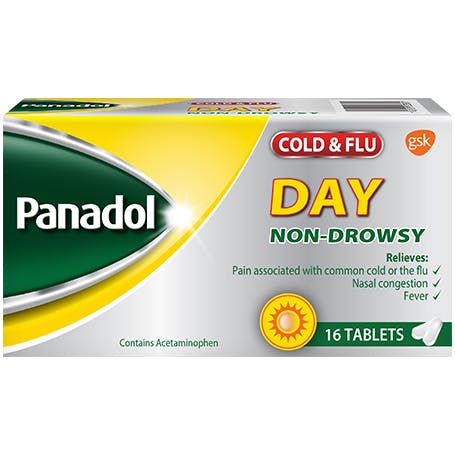
Cold & Flu
Everyone gets a cold from time to time. More than 200 different viruses can cause a cold, but the rhinovirus is the most common culprit. Its symptoms typically include runny nose and sneezing. It is worth mentioning that a cold is not the same as a flu (influenza). Flu symptoms are more severe and can include a fever and shaking chills, aches and pains, lethargy and headaches.

Cold and flu - when to see a doctor
The term ‘flu’ is often used to refer to a number of illnesses and may sometimes be confused with the common cold.51
Influenza, or ‘flu’ for short, is actually a respiratory illness caused by viruses that can lead to fevers, headaches, coughs, sore throats and muscle aches. There are different types of viruses that can cause the flu. Most attack the body’s respiratory system – the lungs and the airways, including the throat and nose – causing classic flu symptoms such as:51
- dry cough
- sore throat
- high fever, chills and sweating
- headache
- muscle aches or body aches
- tiredness and weakness.


It can sometimes be difficult to tell the difference between the flu and a cold by symptoms alone. However, in general:52,53
- Flu symptoms last longer and may be associated with fever, shivering and muscle pain.
- Cold symptoms tend to last for a shorter period of time and usually only involve a runny nose and a mild fever.
- Avoiding contact with those who are sick. If you are unwell, stay home away from work, school or social gatherings.54
In most cases, people with the flu will recover in five to seven days. The key is to get plenty of rest and drink plenty of fluids. Over-the-counter flu treatment medicine may also help decrease the severity of the symptoms.
Always consult a doctor if flu is suspected especially for the vulnerable such as the elderly, young babies or those with weakened immune systems.
Both cold and flu are caused by viruses, the most common of which is the rhinovirus.55 Flu viruses can vary with the seasons and geographical areas. While cold and flu share some overlapping symptoms, there are some differences too.


Colds typically last for one to two days with the following symptoms:56
- occasional but usually mild fever
- a runny or stuffy nose and congested sinuses
- sore throat
- cough
- sneezing
- headaches
- red, watery eyes
- loss of appetite, and sometimes nausea and some vomiting.
Flu is more likely to last for at least a week and has more severe symptoms, including:56
- a high fever
- a dry sensation in the nose and throat
- chills and sweats
- muscle aches and pains, especially in the back, arms and legs
- cough
- headaches.
Most cold and flu will get better without any medical treatment. However, see the doctor if the child or adult:56


- refuses to drink water or other fluids
- vomits frequently
- complains of intense headache or earache
- is having difficulty breathing
- has a persistent cough
- coughs up rusty-coloured or blood-stained phlegm
- has a high fever that does not respond to acetaminophen or ibuprofen
- shows no improvement in 48 hours.






